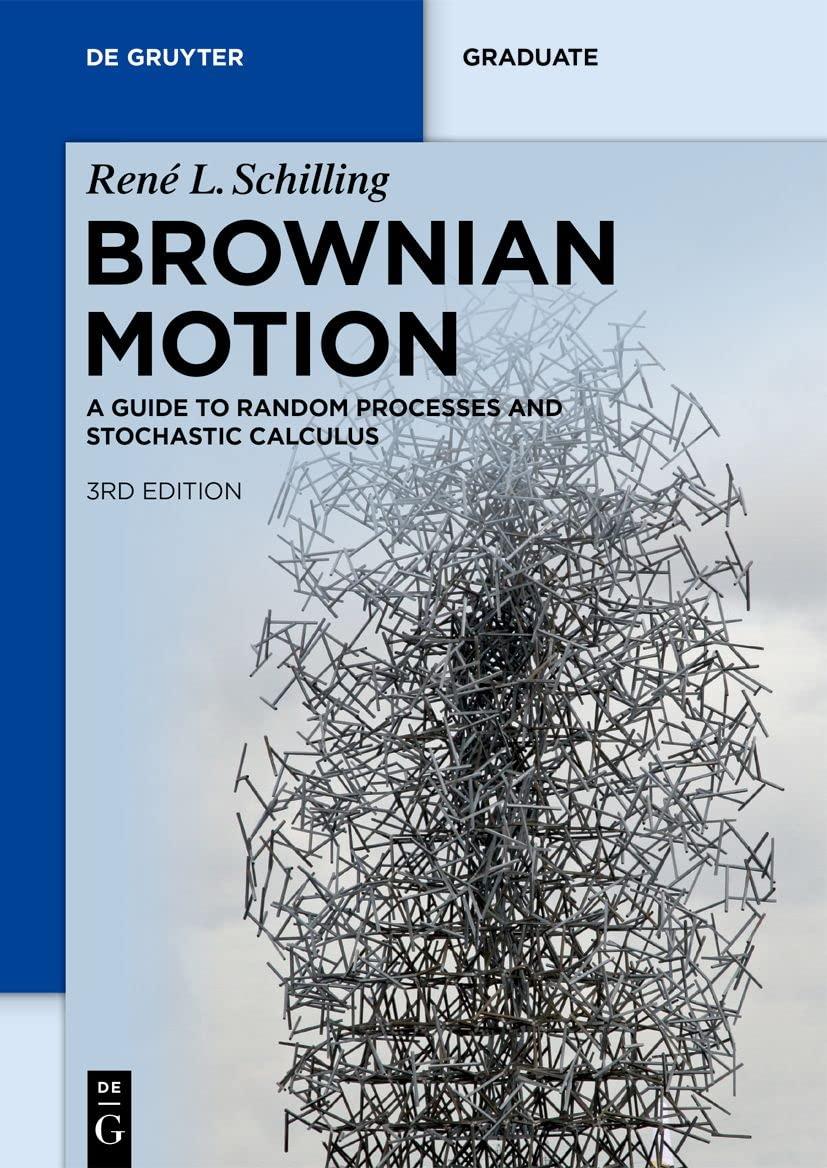Let (phi_{n}=H_{n}, n=0,1,2, ldots), be the Haar functions. The following steps show that the full sequence (W_{N}(t,
Question:
Let \(\phi_{n}=H_{n}, n=0,1,2, \ldots\), be the Haar functions. The following steps show that the full sequence \(W_{N}(t, \omega):=\sum_{n=0}^{N-1} G_{n}(\omega) S_{n}(t), N=1,2, \ldots\), converges uniformly for \(\mathbb{P}\)-almost all \(\omega \in \Omega\).
a) Let \(\left(a_{n}ight)_{n \geqslant 0} \subset \mathbb{R}\) be a sequence satisfying \(a_{n}=O\left(n^{\epsilon}ight)\) for some \(\epsilon \in(0,1 / 2)\). Show that \(\sum_{n=0}^{\infty} a_{n} S_{n}(t)\) converges absolutely and uniformly in \(t \in[0,1]\).
b) Let \(\left(G_{n}ight)_{n \geqslant 0}\) be a sequence of iid \(\mathrm{N}(0,1)\) random variables. Show that almost surely \(\left|G_{n}ight|=O(\sqrt{\log n})\).
Use \(\mathbb{P}\left(\left|G_{1}ight|>xight) \leqslant 2(2 \pi)^{-1 / 2} x^{-1} e^{-x^{2} / 2}, x>0\), and the Borel-Cantelli lemma.
Step by Step Answer:

Brownian Motion A Guide To Random Processes And Stochastic Calculus De Gruyter Textbook
ISBN: 9783110741254
3rd Edition
Authors: René L. Schilling, Björn Böttcher





